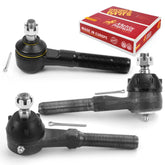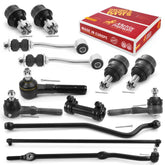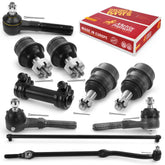Braking 101: How Rear-Wheel Drive Cars Stop Safely

For many drivers, understanding how different drivetrains affect a vehicle’s braking performance can make a significant difference in both safety and handling. Rear-wheel-drive (RWD) cars, common in high-performance vehicles and trucks, handle braking differently compared to front-wheel or all-wheel-drive cars. Whether you’re a seasoned DIYer, a car enthusiast, or someone just interested in car maintenance, knowing how your RWD vehicle stops safely is crucial.
How Rear-Wheel Drive Cars Handle Braking
In a rear-wheel-drive car, the engine's power is directed to the rear wheels, which are responsible for propulsion, while the front wheels manage steering.
During braking, a significant amount of weight transfers to the front of the vehicle. This shift in weight distribution is a key factor that impacts braking performance. As the front of the vehicle bears more of the load, the front brakes typically handle most of the stopping power, while the rear brakes provide stability. Ensuring that your brakes are properly maintained is crucial to account for this weight transfer and to maintain balanced stopping power.
For this reason, both front and rear brakes must be in optimal condition to ensure balanced braking and avoid skidding, especially in sudden stop situations or adverse road conditions. Regular brake checks are essential to maintain this balance and ensure the rear brakes don't wear out prematurely, causing potential control issues.
Parts That Play Key Roles in Braking
Several components work together to make braking smooth and effective in RWD cars:
- Brake Pads and Rotors: These are the main parts that convert the car’s kinetic energy into heat. If the pads are too worn or the rotors are warped, braking efficiency will decrease significantly.
- Calipers: These hydraulic parts press the brake pads against the rotors, creating the friction that stops the wheels. If they fail, you may experience uneven braking.
- Brake Fluid: Ensuring your brake fluid is topped up and free of air bubbles is crucial for maintaining hydraulic pressure and consistent braking.
- Rear Brakes: While the rear brakes do less of the overall braking work in RWD cars, they provide essential balance and stability during stops, particularly in slippery or emergencies.
Maintenance Tips for RWD Braking Systems
- Regular Inspections: Frequent brake inspections are a must to catch any signs of wear and tear. DIYers can easily inspect brake pads for thickness and check for any unusual sounds during braking.
- Brake Fluid Check: Ensure that your brake fluid is at the right level and that there are no leaks. Old or contaminated brake fluid can cause braking to feel spongy and reduce response time.
- Upgrade Worn Parts: If you notice any signs of uneven wear or performance issues, replace the brake parts immediately. RWD cars especially need a balance between front and rear brakes for safe stopping.
A Trusted Source for Braking Upgrades
For replacing or upgrading your brakes, having high-quality parts is essential. Metrix Premium Chassis Parts offers premium steering, suspension, and brake parts specifically designed to fit your vehicle. With a focus on quality and durability, these parts ensure a perfect fit and improved performance.
Metrix Premium also provides the advantage of fast, free shipping directly to your doorstep, making it easier than ever to perform DIY upgrades or get your vehicle to the mechanic with the right parts in hand. You can enjoy an easy installation, whether you are doing it yourself or working with a professional.
Safe Braking for Every Ride
Braking safely is one of the most important aspects of vehicle maintenance, especially in rear-wheel-drive cars where balanced braking and proper weight distribution are critical. Regular inspections, timely part replacements, and understanding how your car’s braking system works can greatly enhance your driving experience. Remember, whether you're a DIYer or prefer to take your vehicle to a mechanic, maintaining your brakes is key to staying safe on the road.
Follow us on social media and sign up at our website for notifications about new posts and giveaways.
Previous Article: How Long Can You Drive With Bad Sway Bar Links?









